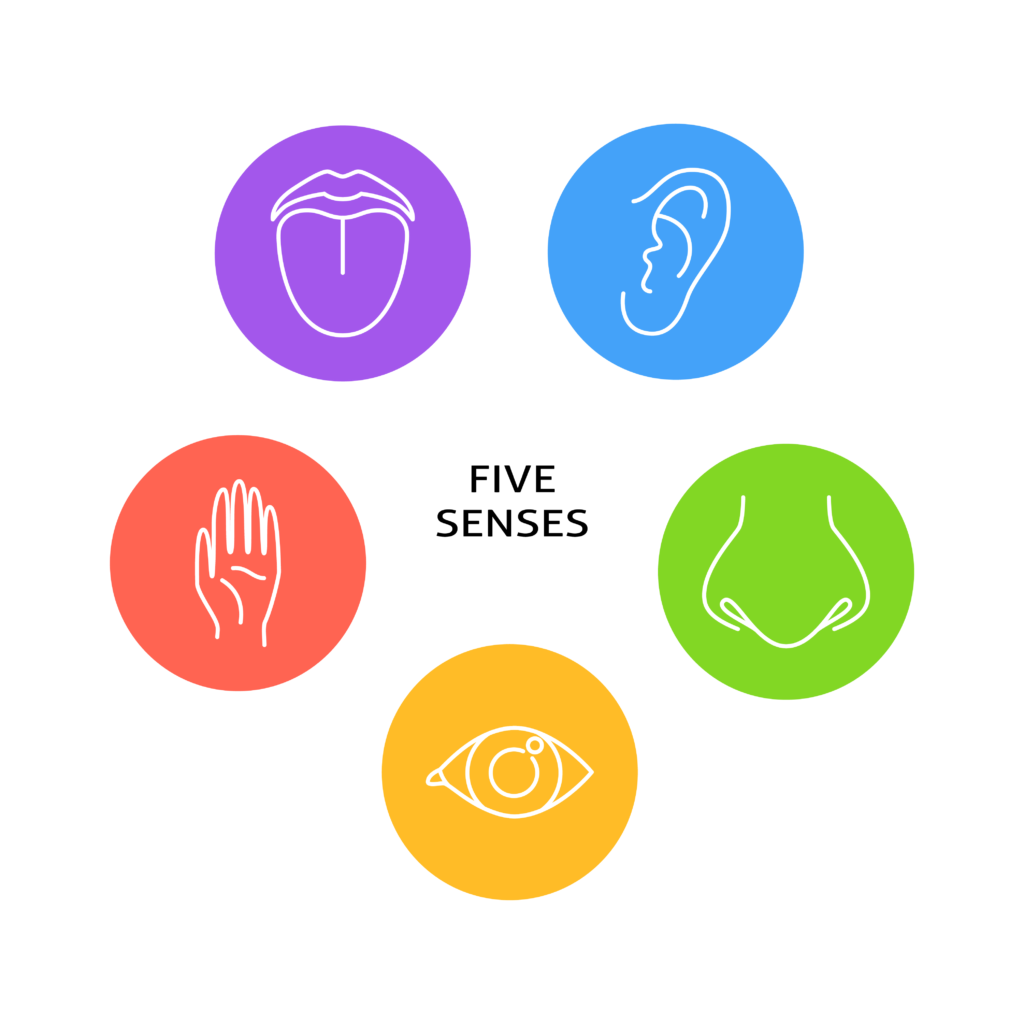You know you have five senses, but do you know that using as many as possible in a description helps that description come alive? Yep. So you can say it was a blue car, but if you say it was a blue car with an engine that roared, you’ve got a better description. How about tennis shoes that smell like low tide? Or brownies that taste like chopped liver? Bringing more than one sense into play engages the reader more fully, creates a more lasting impression, and gives a stronger image.
Sensory Detail Examples
Seeing – blurry, clear, foggy, vivid, dull …
Hearing – loud, soft, melodic, harsh, whiny, reedy, like nails on a chalkboard …
Touching – rough, smooth, jagged, filed, bumpy, silky, furry, coarse …
Tasting – tart, sweet, spicy, sugary, lemony, acidic …
Smelling – rancid, fresh, rotten, flowery, pleasant …
Make It a Game
- Print two copies of a bunch of pictures.
- Make two piles with one copy of each picture.
- Place one set face-down on a table and “deal” the other set to the players.
- (Have each player keep their cards hidden from the others!)
- Have players take turns giving sensory descriptions of one of their cards while the other players guess which picture they’re describing.
